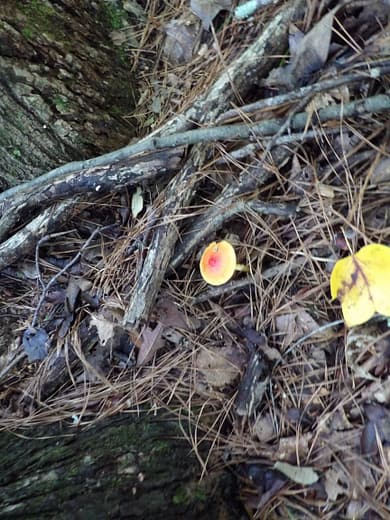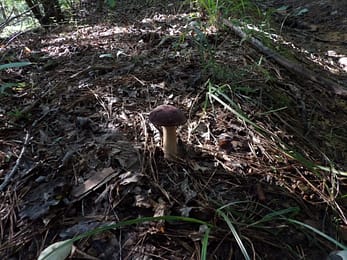
If you’ve ever spent time in the outdoors, you know there are many hidden treasures to be found. But have you ever considered that some of these hidden treasures could be edible mushrooms and plants? While survival in the wild might depend on knowing what to look for, the rewards of finding the right edible mushrooms and plants can be great. In this blog post, we’ll discuss the different types of edible mushrooms and plants you can find while out in the wild, and how to identify and safely harvest them.
What are Edible Mushrooms and Plants?
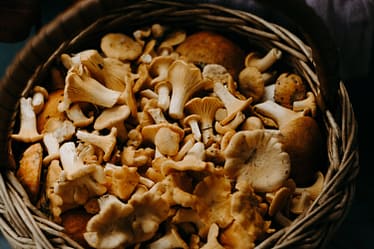
Edible mushrooms and plants are those that can be safely consumed by humans. They grow abundantly in the wild and offer a wide range of nutrients and flavors that are often unavailable in commercially grown produce.
Mushrooms and plants have been a part of human diets for thousands of years and continue to be an important source of nutrition for many cultures around the world. Some examples of edible mushrooms include morels, chanterelles, and shiitakes, while edible plants can include wild greens, berries, and fruits.
The nutritional benefits of wild edibles are impressive. For example, many wild mushrooms are high in antioxidants, which can help protect the body against cell damage. Edible plants are also packed with vitamins, minerals, and fiber that are essential for a healthy diet.
While it may be tempting to try to forage for your own wild edibles, it’s important to do so with caution and care. Misidentification can lead to serious health risks, including poisoning. Therefore, it’s crucial to learn how to identify edible mushrooms and plants correctly and safely.
In the following sections, we will explore the reasons why it’s important to learn to identify wild edibles and the best ways to do so. We’ll also provide some delicious recipes and sustainable harvesting practices for enjoying these hidden treasures in the outdoors.
Why You Should Learn to Identify Edible Mushrooms and Plants
If you’re someone who loves spending time in the great outdoors, then you may have come across mushrooms and plants that you couldn’t identify. While some may think of them as just another part of the scenery, it’s worth considering that some of these plants and mushrooms may actually be edible and a potential source of nutrition.
Identifying and harvesting edible mushrooms and plants can be a fun and rewarding activity. However, it’s essential to learn how to identify the different species accurately. One of the main reasons why you should learn to identify edible mushrooms and plants is for safety reasons. Eating the wrong species can be dangerous and even fatal. Some toxic species may look similar to their edible counterparts, making it crucial to have a good understanding of the differences.
In addition to the safety aspect, knowing how to identify and utilize wild edibles can be a great skill to have. It’s a way to connect with nature and learn about the diverse plant life that surrounds us. Furthermore, foraging can be a sustainable way of obtaining food that is both healthy and cost-effective.
Overall, learning to identify edible mushrooms and plants is an excellent way to broaden your knowledge of the outdoors and potentially provide yourself with some nourishing meals. Just make sure you do your research and take the necessary precautions before harvesting any wild edibles.
The Dangers of Misidentification
While the idea of foraging for wild edibles can be exciting, it’s important to be aware of the risks associated with misidentifying mushrooms and plants. Consuming toxic plants and fungi can lead to serious illness or even death, making it crucial to learn how to identify edibles accurately.
Some of the most poisonous mushrooms can look similar to safe varieties, such as the deadly amanita mushroom and the edible chanterelle. Additionally, plants that appear similar in appearance, such as wild parsnip and poison hemlock, can have vastly different effects on the human body.
Misidentification is a risk even for seasoned foragers, so it’s important to approach every wild plant or mushroom with caution and to use reputable identification resources such as guidebooks or local foraging experts. Taking a photo or a sample of the plant or mushroom can also be helpful for double-checking identification later on.
In order to prevent misidentification and potential harm, it’s recommended to start with a few easily identifiable species and slowly expand your knowledge from there. Remember, when in doubt, don’t eat it.
Best Places to Find Edible Mushrooms and Plants in the Outdoors
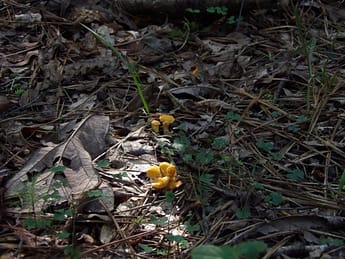
Foraging for edible mushrooms and plants is an exciting and rewarding outdoor activity that can lead you to the hidden treasures of the forest. However, it’s important to know where to look for these wild edibles to ensure a successful and safe foraging experience.
Some of the best places to find edible mushrooms and plants include wooded areas, open meadows, fields, and even along the edge of roadsides. It’s important to pay attention to the terrain, the time of year, and the weather conditions when searching for these wild edibles.
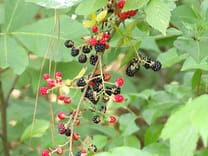
In wooded areas, look for mushrooms growing on dead or decaying trees, as well as on the forest floor. You may also find edible plants such as ramps, ferns, and wild berries in these areas. Open meadows and fields can yield edible plants like wild asparagus, dandelions, and clover. Along roadsides, you may find wild blackberries, raspberries, and other fruiting shrubs.
Be sure to research the specific types of edible mushrooms and plants that are found in your area and their specific growing conditions. Always be cautious and never consume a wild edible unless you are 100% certain of its identity.
Remember, foraging for wild edibles is a sustainable practice that requires responsible harvesting and respect for the environment. Always be sure to leave plenty for wildlife and future foragers.
How to Identify Edible Mushrooms and Plants
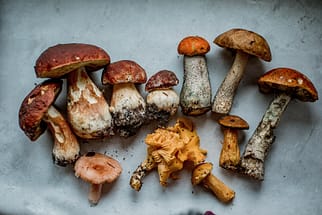
Identifying edible mushrooms and plants is a crucial skill for any forager or outdoor enthusiast. While there are many resources available for identifying wild edibles, it is essential to approach the task with caution and knowledge. Here are some tips on how to identify edible mushrooms and plants in the outdoors:
1. Start with the basics: It is best to begin with the most common and easily identifiable wild edibles. Start with familiar plants like dandelion or clover, or easy-to-recognize mushrooms like chanterelles or morels.
2. Study field guides: A field guide is a must-have tool for any forager. Take the time to read and understand the descriptions and photos provided in the guide.
3. Consider the habitat: Plants and mushrooms often grow in specific habitats. Learn the characteristics of each habitat and which plants and mushrooms are commonly found in each one.
4. Check for poisonous look-alikes: Some edible mushrooms and plants have poisonous look-alikes, so it’s essential to identify them accurately. Look for key differences, such as color or shape.
5. Learn from an expert: It’s always best to learn from someone with experience. Take a guided foraging tour or find a mentor who can help you identify wild edibles correctly.
Remember, it’s always better to err on the side of caution when foraging for wild edibles. Only harvest what you can confidently identify, and always practice sustainable foraging practices.
Delicious Recipes for Using Wild Edibles
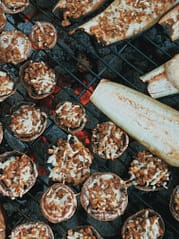
If you’ve been foraging for wild mushrooms and plants, you’re probably wondering how to incorporate these fresh, flavorful ingredients into your meals. Here are some delicious recipes that will help you get the most out of your wild edibles.
A classic Italian dish, mushroom risotto is the perfect way to showcase the delicate flavors of wild mushrooms. Start by sautéing chopped onions and garlic in olive oil, then add a cup of arborio rice and stir until it’s coated in oil. Slowly add hot chicken broth, stirring constantly until the rice is cooked. Meanwhile, sauté sliced mushrooms in a separate pan and add them to the risotto once it’s cooked. Stir in Parmesan cheese and top with fresh parsley.
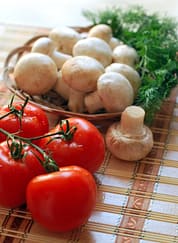
Wild Greens Salad
For a simple, refreshing side dish, mix together a variety of wild greens, such as dandelion leaves, chickweed, and plantain. Dress with a light vinaigrette made with olive oil, apple cider vinegar, Dijon mustard, and honey. Top with sliced strawberries, goat cheese, and toasted walnuts.
Nettle Pesto Pasta
Nettles are a common wild plant that can be used in a variety of recipes, but this pesto pasta is a favorite. Start by blanching a handful of nettle leaves in boiling water for a minute or two, then remove and drain. In a food processor, combine the nettles with garlic, Parmesan cheese, pine nuts, and olive oil until smooth. Toss with cooked pasta and serve hot.
These are just a few examples of the delicious meals you can make with wild mushrooms and plants. Remember to always harvest responsibly and avoid over-picking any one plant or mushroom. Happy foraging!
Sustainable Harvesting and Foraging Practices
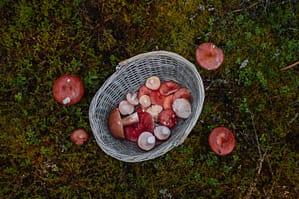
As with any natural resource, it is essential to forage for edible mushrooms and plants sustainably. Over-harvesting can quickly lead to the depletion of certain species and negatively impact the ecosystem. Here are some best practices to ensure your foraging efforts are sustainable:
1. Only harvest what you need. Resist the urge to gather more than you can use. Take only what you need and leave the rest for others to enjoy.
2. Don’t disturb the environment. When foraging, avoid trampling on the undergrowth and stepping on small plants. Keep the environment as undisturbed as possible.
3. Respect wildlife. Be mindful of animals that depend on the same resources you’re gathering and be sure to leave enough for them to thrive.
4. Know your laws and regulations. Certain areas may have specific regulations and limits on foraging. Make sure to follow these regulations and respect any posted signs.
5. Identify invasive species. Some wild edibles may be invasive species, which can cause harm to the local environment. Do your research and make sure you’re not harvesting anything that could be harmful.
By following these sustainable practices, we can ensure that the natural resources we depend on continue to thrive for generations to come.
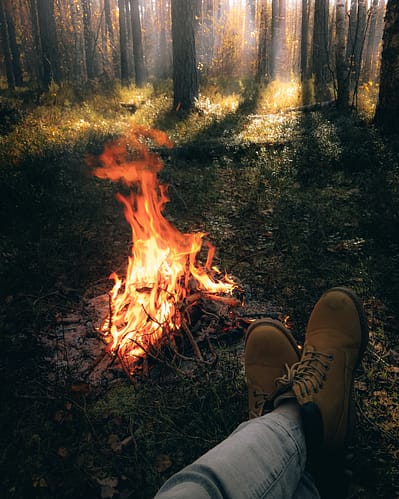
DISCLAIMER
THIS ARTICLE CONTAINS AMAZON AFFILIATE LINKS WHICH ENABLE US TO SHARE IN THE REVENUE OF PURCHASES MADE. REGISTRATION ON OR USE OF THIS SITE CONSTITUTES ACCEPTANCE OF OUR TERMS OF SERVICE.
